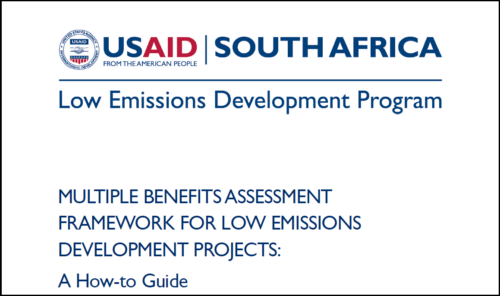Multiple Benefits Assessment Framework for Low Emissions Development Projects: A How-to Guide
One of the challenges that policymakers face in promoting and justifying low emissions development (LED) or ‘green economy’ projects is effectively articulating and quantifying the positive socio-economic benefits that LED projects produce.
